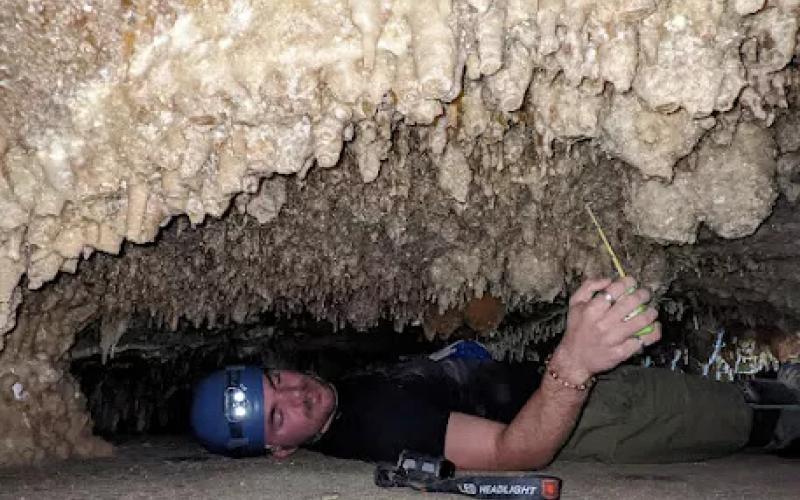The Midden: Uncovering the Mystery of Cave Turnips

This article is the second in a series of posts showcasing articles published in the Summer 2023 issue of “The Midden”, Great Basin National Park’s semiannual resource management newsletter. The series will introduce you to some of the issues, projects, and management strategies currently happening in Great Basin National Park.
Turnip stalactites are not your everyday speleothem. In fact, we hardly know anything about them. But due to the research of an intern, we now know a lot more, including that Lehman Caves has over 1,000 turnip stalactites!
Uncovering the Mystery of Cave Turnips
By Ryan Johnston, Researcher
During the summer of 2022, a total of 17 volunteer turnip researchers spent over 500 hours in Lehman Caves to uncover the mystery of the cave turnip, a type of speleothem. In the end, 1,017 total cave turnips were documented, measured, mapped, and photographed.
Cave turnips, a globally rare speleothem that occurs in abundance in Lehman Caves, were researched to determine their overall morphology, speleogenesis, and relationship to other cave features. Nightly, the “Turnip Team” would trek into the cave, spending time in various rooms around the cave, specifically off of the Gothic Palace and Lodge Room tour paths.
Four morphologic measurements were taken on each of the 1017 in situ turnips. Measurements (in mm) of the overall length, the width at the base, the width at the center, and the width at the tip were taken and then summed for each turnip. Either digital calipers or a tape measure were used for all measurements, depending on speleothem accessibility. In addition, the presence or absence of condensation corrosion on each cave turnip and the proximity of the basal attachment to the ceiling or to fractures were noted. The location of each turnip was also marked on a physical map of each room and photographs were taken of every specimen, as well.
To reach the 1000 turnip goal, a night we dubbed “Turnipgeddon” was planned at the beginning of August. While most nights of the research consisted of four team members, this night was a six-hour long session with 17 volunteers divided into smaller teams. A total of 317 turnips were measured throughout this session and left the crew feeling accomplished yet very exhausted. None of this research could have been completed without the volunteers who assisted throughout the summer.
Due to the work of the Turnip Team, interesting contributions were made. This work proposes a new size classification system based on the four morphologic measurements taken on the turnips. The length, width at base, width at center, and width at tip were summed for each turnip, which designates its size classification: micro-turnip (<200 mm), meso-turnip (200-349 mm), or macro-turnip (≥350 mm). Research found that the smaller the cave turnip, the more likely it formed along fractures and displayed condensation corrosion. The larger the cave turnip, the more likely it formed along the ceiling and lacked condensation corrosion. Fractures are more prone to display condensation corrosion, while the ceiling basal attachment is more likely to lack corrosion.
This study also hypothesizes that cave turnip genesis begins as a soda straw, an abnormal bubble forms on the tip, and calcitic water flows over the bubble, creating the unique hollow turnip shape. Two cave turnip specimens collected from the cave were uranium-thorium age-dated, and the age-dates were interpreted based on turnip speleogenesis. It was found the speleothems were 60,000 and 250,000 years old, which place their genesis during wet, cool, pluvial periods. This provides evidence for our hypothesis that the turnips formed during this time.
Dot density maps were also created of the various cave rooms, depicting the 1,017 turnips. Room maps display the spatial location of turnip size, the presence/absence of condensation corrosion, and the type of basal attachment for each turnip located throughout the rooms studied.
Thanks to all of the amazing park employees who put their sweat and hearts into this project. Without their drive to uncover new information, the hours they put in, and the memories they helped create, the turnips may still have been left a complete anomaly.
Photo: Measuring turnip stalactites could be difficult. Ryan Johnston
